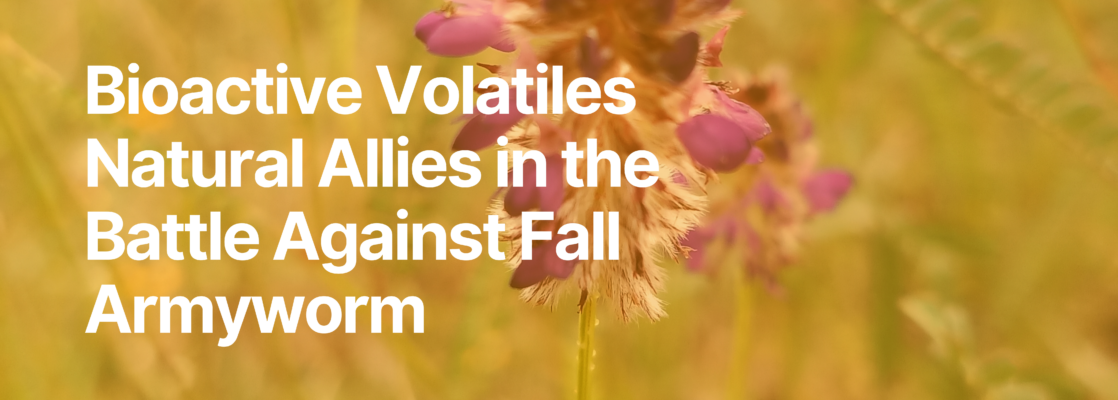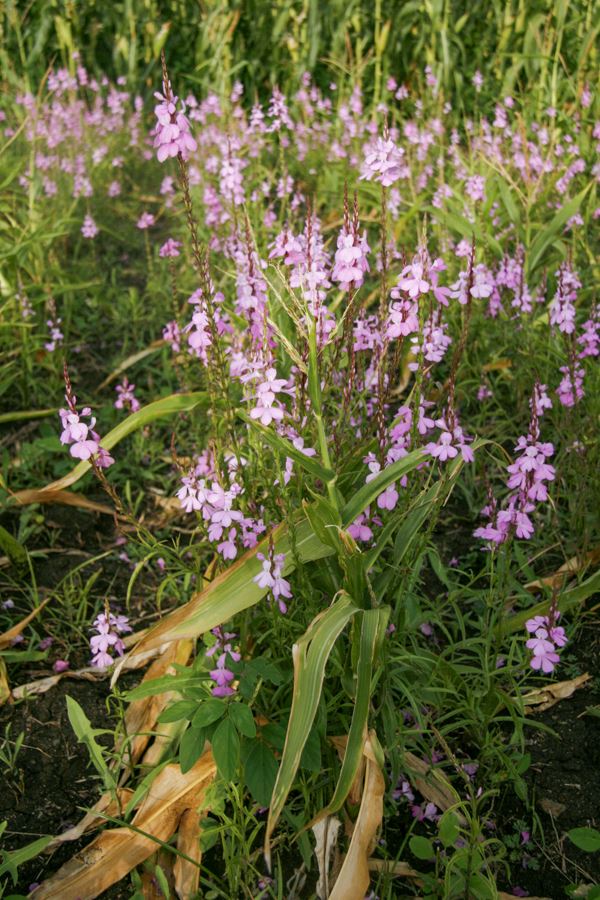Plant volatiles are the secondary metabolites that plants release into the air. Almost one-fifth of the atmospheric CO2 fixed by land plants is released back into the air each day as volatiles. They are protection against biotic and abiotic stresses and provide (dis)information to mutualists and competitors alike. Volatiles mediate the interaction of plants with pollinators, herbivores and their natural enemies, other plants and micro‐organisms. Regarding the use of bioactive volatiles in pest management such as the fall armyworm, they present sustainable means of protecting crops.
What is a Fall Armyworm?
The fall armyworm (Spodoptera frugiperda, FAW) is a highly damaging pest that typically attacks maize fields. In Africa, maize is one of the main sources of food and income security crops for millions of small households. Besides maize, FAW is known to feed on more than 350 plant species, including economically important crops such as cotton, rice, sorghum, sugarcane, wheat and many other vegetable and fruit crops.
Currently, fall armyworms are known to be polyphagous therefore can feed on a wide variety of host plants. Adults of this pest breed, grow and spread extremely quickly, and as a result, become a serious threat to agriculture. Infestations result in low productivity and high costs.
Some of the crops have certain levels of bioactive compounds, which can be used in controlling FAW. Intercropping with forage legumes, such as Desmodium, is becoming more popular since it can suppress the devastating parasitic witchweed Striga in addition to repelling insect pests. The Desmodium species produced high amounts of terpenoids, particularly (E)-ocimene and DMNT, and it was shown that more parasitoids were attracted when maize was intercropped with Desmodium.
These natural compounds can push the pests away and at the same time pull parasitoids. The larvae of these parasitoids then consume the fall armyworms, and therefore decrease their population size.
Push-Pull Technology (PPT)
Push-pull technology, invented and developed by the International Centre of Insect Physiology and Ecology (icipe), is a modern technique of crop protection in the agricultural sector and centre-based sustainable farming system that utilizes the concept of bioactive volatiles for control of pests. This method entails growing maize with other plants that pests distaste (push) and placing other plants that pests like, around the field (pull).
The functioning system of this technology:
Push: They intercrop with other crops such as Desmodium. It emits bioactive volatiles including, (E)-β-ocimene and DMNT, which act as repellents against FAW.
Pull: Uses border crops such as Brachiaria in order to attract parasitoids such as Cotesia icipe and Coccygidum luteum, which are the enemies of FAW.
Further development of PPT made companion crops “climate-smart” by selecting more drought-tolerant species that are resilient to variable and reduced rainfall patterns associated with climate change. Climate-smart PPT includes Greenleaf Desmodium, Desmodium intortum, as the intercrop and Brachiaria hybrid cultivar Mulato II as the border crop.
Benefits of Push-Pull Technology
It was found that by using push-pull technology, there is a large amount of reduction in the infestation rates and damage by FAW. For example, the infestation of pests in the push-pull plots was significantly low compared to the monoculture maize plots. Pest control in PPT keeps healthy crops free from pests hence increasing production. Also, it helps in reducing the use of chemical pesticides thus practicing sustainable farming and agriculture.
In this case, PPT could be a lifesaver for farmers, especially the women farmers who are usually the backbone of the agricultural value chain. It can be a natural way and environmentally friendly way of controlling the FAW to intensify the good health of crops and consequently better yields. Indeed, the use of bioactive volatiles can be seen as a re-mediative strategy that increases a farmer’s sustainable development by exploiting nature’s protective defences.
References:
Sobhy, Islam & Tamiru, Amanuel & Chiriboga Morales, Xavier & Nyagol, Dickens & Cheruiyot, Duncan & Chidawanyika, Frank & Subramanian, Sevgan & Midega, Charles & Bruce, Toby & Khan, Zeyaur. (2022). Bioactive Volatiles From Push-Pull Companion Crops Repel Fall Armyworm and Attract Its Parasitoids. Frontiers in Ecology and Evolution. 10. 883020. 10.3389/fevo.2022.883020.
Bouwmeester H, Schuurink RC, Bleeker PM, Schiestl F. The role of volatiles in plant communication. Plant J. 2019 Dec;100(5):892-907. doi: 10.1111/tpj.14496. Epub 2019 Sep 19. PMID: 31410886; PMCID: PMC6899487.


